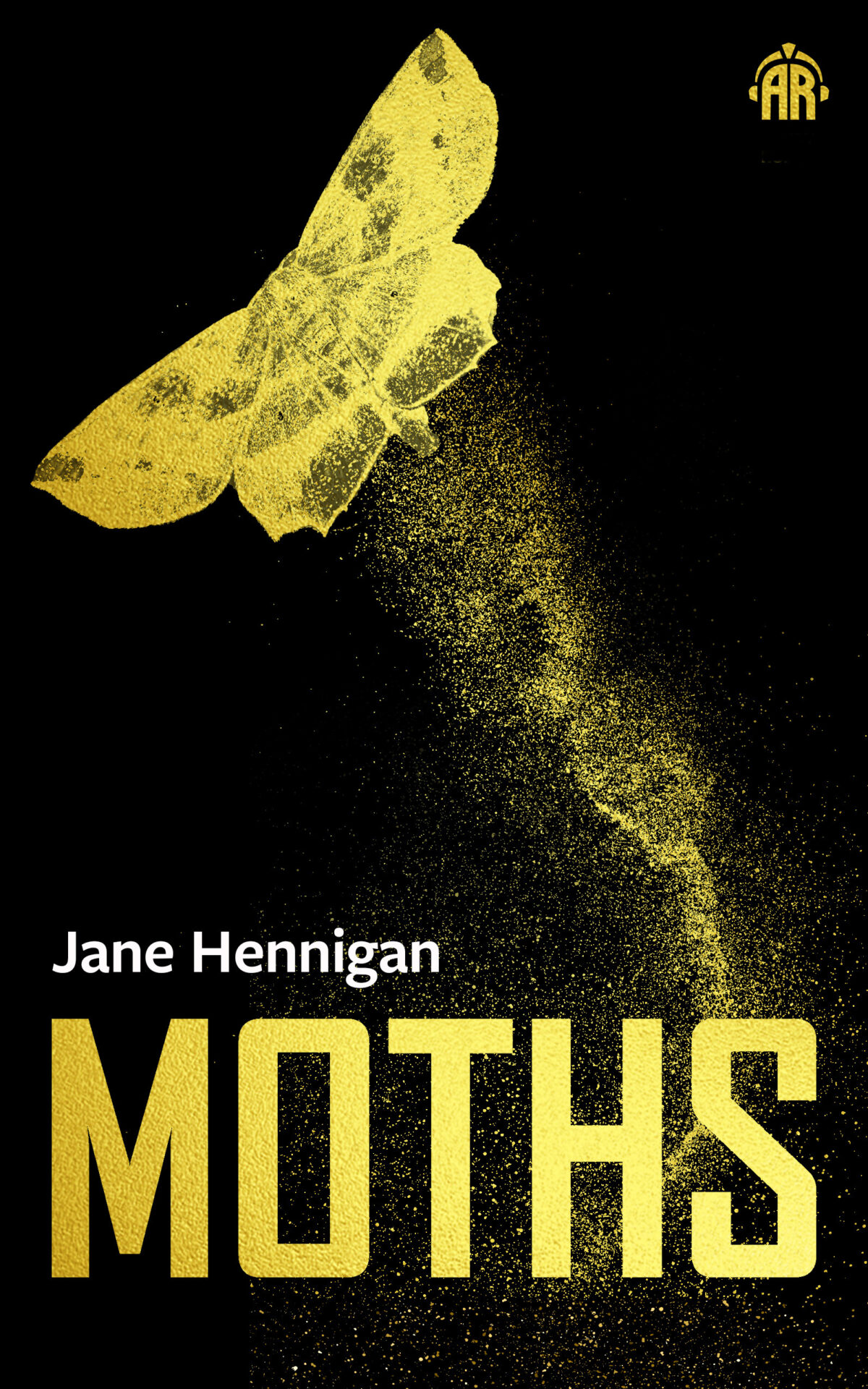
Jane Hennigan is joining us today to talk about her novel, Moths. Here’s the publisher’s description:
A thrilling dystopia, in turns heart-breaking and heart-pounding
Where were you at the beginning?
Or at the end?
And where are we all now?
Forty years ago, the world changed. Toxic threads left behind by mutated moths infected men and boys around the globe. Some were killed quietly in their sleep, others became crazed killers, wildly dangerous and beyond help. All seemed hopeless.
But humanity adapted, healed and moved on. Now matriarchs rule, and men are kept in specially treated dust-free facilities for their safety and the good of society, never able to return to the outside.
Mary has settled into this new world and takes care of the male residents at her facility. But she still remembers how things used to be and is constantly haunted by her memories. Of her family, of her joy, of… him.
Now the world is quiet again, but only because secrets are kept safe in whispers. And the biggest secret of all? No one wants to live inside a cage…
Exploring male violence against women, homo-normativity, and gynocracy, Moths is a powerful assessment of life through the lens of a main character in her 70s. A remastered and revitalised version of the previously self-published, smash-hit dystopian thriller by the same name, Moths shows us a new, post-pandemic world.
What’s Jane’s favorite bit?

Jane Hennigan
For the sake of irony, I subverted many tropes from dystopian novels in Moths – but my favorite was the visitation scene.
A new moth species sweeps the globe, infecting men with an insatiable rage or killing them in their sleep. Decades later, to protect them from this airborne toxin, men born into The Union are kept in specially designed facilities – away from the outside world. In this new society, reproduction works via artificial insemination and society practices homonormative relationships. However, in the last ten or so years the facilities, in a bid for more funding, have begun offering a service to local women. These women can apply for a visitation with a man – a sexual encounter in a controlled, sterile environment. Sometimes the women attend together, sometimes alone.
The men have a choice on whether to engage in the visitation programme. But those who decline are not treated quite as well as those who participate with enthusiasm – those that decline are given undesirable chores and denied the cakes and treats with which the participants are rewarded.
I was excited to explore a subverted patriarchy. My intention in swapping the gender norms here was to defamiliarize sexual coercion, looking at this kind of oppression in a new light. From Atwood’s The Handmaid’s Tale to The Walking Dead – many dystopian worlds have women shoved into grim harems, controlled by brutal male masters. It’s a well-used fantasy trope, one that often attracts more titillating salacity than it deserves. The sad fact is, that these fictitious dystopias reflect the true situation of abused and trafficked women around the world. I didn’t think that, given control, women would necessarily oppress men – although we might. I wanted to re-contextualise the issue with men as the victims in general.
Mary, the narrator, in her seventies at this point, and now living in a world vastly different from the era in which she grew up, is one of the only women working in the facility who can really appreciate the irony of the visitations. She narrates the scene dryly, but without commenting on the strangeness of the situation. My favorite moment of the scene is when the women try to find the men with whom they have been matched:
Some nitwit working the day shift had forgotten to put the numbers on the doors, so there were a few minutes of scurrying and nudging as everyone checked the little nameplates. It became a cheery game of Pelmanism.
Aren’t you looking for Owen, Melody?
Yes!
He’s over here, this one…
Has anyone seen Byron?
I think he was further along.
Thank you!The exploitation the men experience in Moths is new and disquieting for us. Some might counter with a nod to toxic masculinity – they’re men, don’t they LIKE it? Don’t they WANT it? It’s not like they’re being forced, but that’s missing the point. These men are in an unequal power dynamic—any significant disparity in the balance of power, whether it’s in a flipped dystopia, a domestic situation or at the upper echelons of Hollywood, needs addressing. I purposefully underscore the cheerfulness of the perpetrators, and the women’s naivety in this scene is a subversion of how some men perceive coercion and sexual harassment. This irony made writing the scene so enjoyable.
LINKS:
BIO:
I’m Jane Hennigan and I’m the author of MOTHS and TOXXIC, works of dystopian speculative fiction exploring notions of gender, power, and parenthood.
